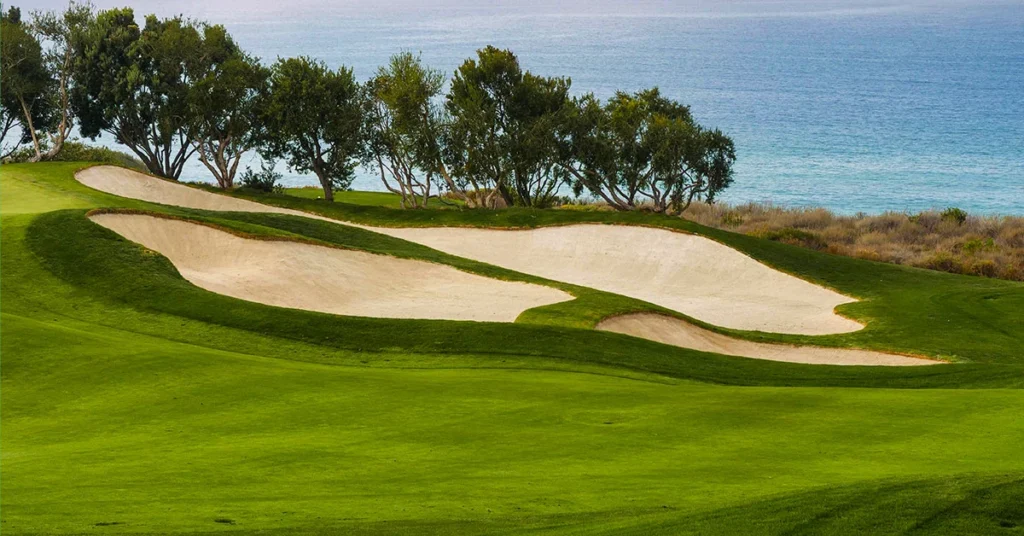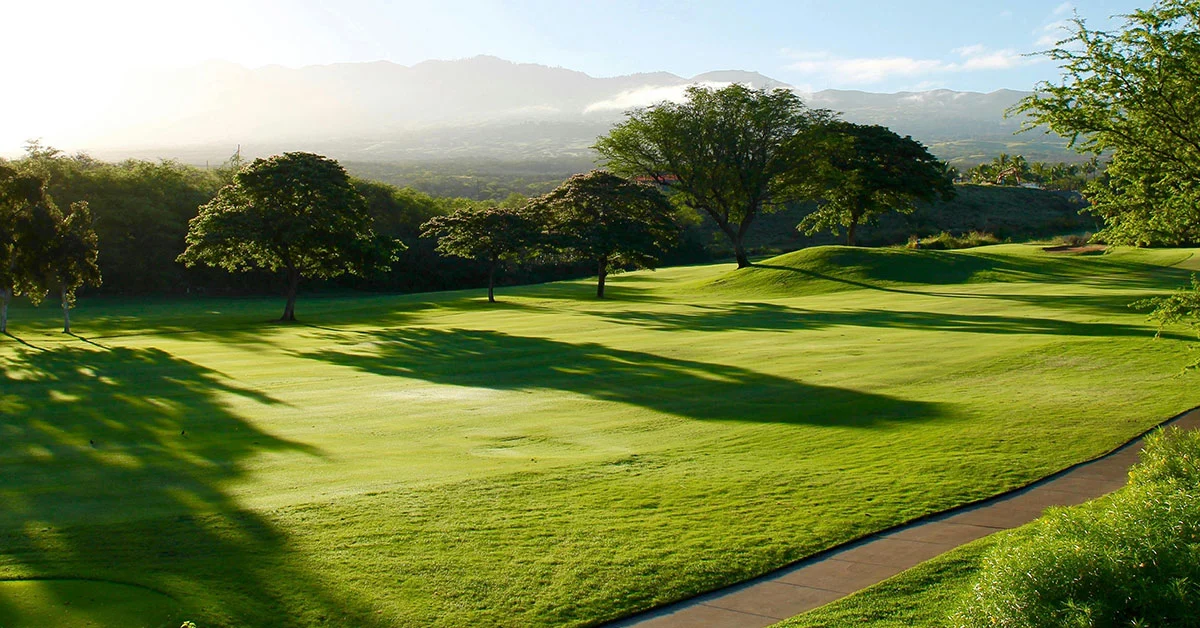- Why are Golf Courses Called Links?
- History Of the Word “Links”:
- What is a Link Golf Course?
- What is the Difference Between Linked Courses and Regular Courses?
- Are Links Golf Courses Difficult to Play?
- What Is the Number of True Links Courses?
- Which Big Competitions are Held on Links Courses?
- Conclusions:
- Frequently Asked Questions:
Golf is a sport that has developed over centuries, with a rich vocabulary that reflects its long history. It is a game where passion and accuracy meet.
When you are evolving in the history of golf, the fascinating terms that echo across the fairways is “links”, and then suddenly, your colleague approaches you and asks, “How about we go on the links today?”Now you need clarification and ask yourself why are golf courses called links.
If you are wandering around this query, you do not need to worry about it because I will explain in detail “Why are Golf Courses Called Links” in the guide. The Old English word “hlinc,” which denotes a sandy shoreline, is where the term “link” originates. Golf courses that meet that description are called link courses.
Let’s delve into the world of links courses and discover why are golf courses Called Links.
Why are Golf Courses Called Links?
The word “links” is a beacon in the ancient tapestry of golf’s history, connecting the sport’s modern appeal to its historical foundations. Before we explore why golf courses are called links, let’s first look at the meaning behind “Links.” Read our article on How are golf courses rated.
History Of the Word “Links”:
The word “links” began its linguistic journey by evoking the Old English word “hlinc,” which meant rising ground or ridge and was also suggested to be a sandy shoreline. However, its coincidental association with golf is inextricably linked to the coastal regions of Scotland and Ireland – the birthplace of golf.
What is a Link Golf Course?

The earliest type of golf course is a link, which originated in Scotland. Compared to parkland and heathland courses, link courses are typically constructed on sandy coastland, which provides a firmer playing surface.
Link is one of the famous types of golf courses. It is distinguished by the absence of trees and other vegetation and preserves the original topography and layout of its land. Golf courses are on very sandy soils because they are close to the sea.
Links courses are also distinguished by their rough terrain, which is usually uneven and unpredictable. Golfers may need help to predict the trajectory and speed of the ball on courses with hills, slopes, and hollows. Pot bunkers and tall grasses can add to the dangers they must avoid.
Links courses offer so many challenges to golfers, which is why golfers regard them as the test level of difficulty for skill and strategy.
If you want to succeed and improve your game on a golf course, you must modify your playing style and develop fresh approaches.
The term is now widely used to refer to any golf course with a similar beach, sandy, or dune-like feel. So, when a golf course is described as a “links course,” it usually highlights its natural dunes, sandy soil, and lack of thick vegetation.
What is the Difference Between Linked Courses and Regular Courses?
Linked Courses
- Link courses have sandy soil, natural dunes, and little vegetation. They are frequently found near the coast.
- It has a Changing Terrain.
- Links courses usually have few trees on links courses.
- Links courses benefit from faster greens and firmer fairways due to their sandy soil. Golfers must modify their strokes for the course’s firmness.
Regular Courses
- Regular courses can be found in diverse locations, including inland areas, mountains, and deserts.
- It has Various Terrain.
- Regular courses may have a higher proportion of trees and other vegetation.
- Regular courses are typically kept up with more of a manicured look, with well-kept fairways, greens, and landscaping.
In short, the main distinctions between regular courses and link courses are their layout, vegetation, terrain, and playing conditions.
Are Links Golf Courses Difficult to Play?
Yes, link courses are harder to play than other courses. Links golf courses are known for being difficult Because of their unique qualities and the impact of nature.
Although any golf course’s difficulty is random and depends on several variables, link courses present special challenges that can make them particularly difficult for golfers.
Here are some reasons why link golf courses are often seen as challenging:
- Links courses are usually found near the coast, where the weather is unpredictable. Strong winds, rain, and erratic weather can greatly impact ball flight, and golfers also need help selecting clubs in this kind of weather.
- Links courses frequently have natural undulations and uneven pathways, requiring deliberate decision-making and exact shot placement.
- The sandy soil of link courses contributes to firm and fast playing conditions. Golfers need help to play approach shots in these conditions.
- Golfers frequently have to consider their shots strategically when playing links courses.
- Links have bunkers and a rough nature, so golfers must plan their shots to avoid these obstacles.
Despite these difficulties, a lot of golfers enjoy playing on links courses because of the unique challenges that they provide. Links golf is a rewarding but challenging sport because of the creativity needed to adjust to changing conditions and the requirement for a versatile game.
What Is the Number of True Links Courses?
Many golf courses worldwide claim to be link courses, but according to some surveys, the total number of true link courses is 247, which The Links Organization acknowledges. According to Links, The system must be on top of sandy soil near the coast to be recognized as a Link course.
Most link courses are in the UK, particularly England, Scotland, and Ireland. Scotland is well-known for having the majority of Link courses. Scotland is where the game of golf originated, and there is a massive one hundred true golf links in the country.
Among all the links to golf courses, the most famous and well-known is St.Andrew’s Old Course, which you should visit and see.
Which Big Competitions are Held on Links Courses?
The British Open Championship is the largest professional golf competition on links courses. Every year, a number of rotating links courses host the game.
Conclusions:
To sum up, Why are Golf Course Called Links? The rich history of golf, especially in the coastal regions of the British Isles, is why golf courses are referred to as “links”.
The word “links” began its linguistic journey by evoking the Old English word “hlinc,” which meant rising ground or ridge and was also suggested to be a sandy shoreline. Links golf courses are distinguished by their distinct geographic setting, which includes sandy soil, dunes, and closeness to the coast.
Links courses offer so many challenges to golfers, which is why golfers regard them as the test level of difficulty for skill and strategy.
You must adjust your playing style and develop new strategies to succeed and improve on a Link golf course.
The Links Golf course is a rewarding but challenging sport Because of the creativity required to adapt to changing conditions and the need for a versatile game. In Scotland, the home of golf, there are 247 link courses. So, to improve your game and performance, consider playing at links.
I am sure that after reading this blog post on “Why are Golf Courses Called Links”, all your doubts are clear, and you will understand why golf courses are called links.
Frequently Asked Questions:
What is the origin of the term “links” in the context of golf courses?
The word “links” first appeared in Scotland, designating a region that connects the inland areas and the sea.
Are all coastal golf courses considered link courses?
Links courses do not apply to all golf courses along the coast. The designation comes with some requirements, such as terrain, soil composition, and compliance with regulatory definitions established by golf associations.


